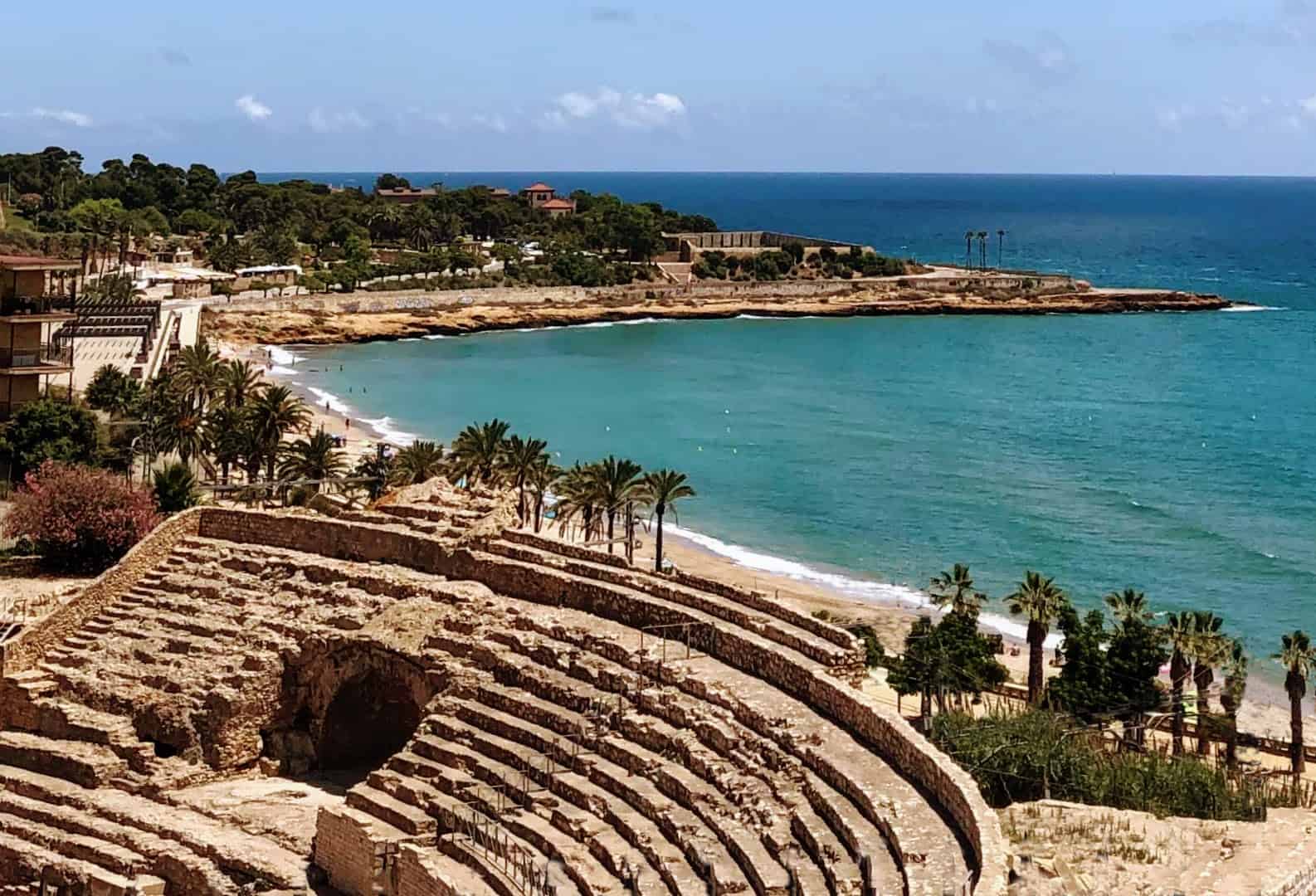Five Underrated Towns Near Barcelona
Barcelona might be notoriously overtouristed, but we’ve learned on recent travels that hotspots are uneven. People tend to line up for photo ops at certain sites while ignoring others of equal or greater interest nearby. Despite the crowds in and around Barcelona, a number of noteworthy places remain untouched by the masses. After multiple visits to Catalonia in the last few years, we’ve picked out a few towns which offer serenity along with some of the region’s best architecture, beaches, and natural scenery. From Gaudí’s most radical building to a Roman amphitheater overlooking the sea, all are within an easy hour’s train ride from central Barcelona.
Contents
Girona
Tarragona
Reus
Colònia Güell
Garraf
Girona
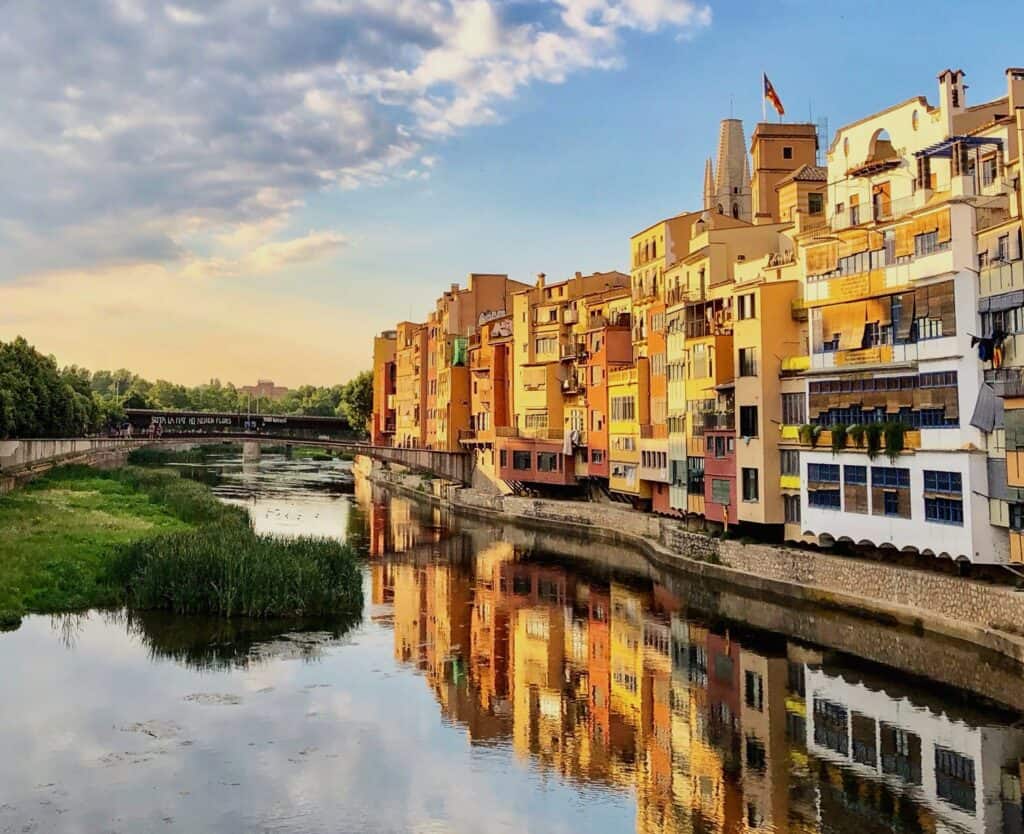
Girona offers a microcosm of Catalonia’s rich history in a picturesque package, perfect for a day trip or to use as a base for the region. In spite of its use as a filming location for Game of Thrones, the town remains off most tourists’ radar.


The city’s fortified walls are one of its most distinctive features, bearing traces of nearly every period, from the prehistoric Iberians to the Romans and onwards. One of the best ways to experience Girona’s historic center is to put away the map and follow the Passeig de la Muralla, which runs atop the walls around the Old City (Barri Vell). From hidden gardens to panoramic viewpoints, it’s impossible to predict what lies around each bend.
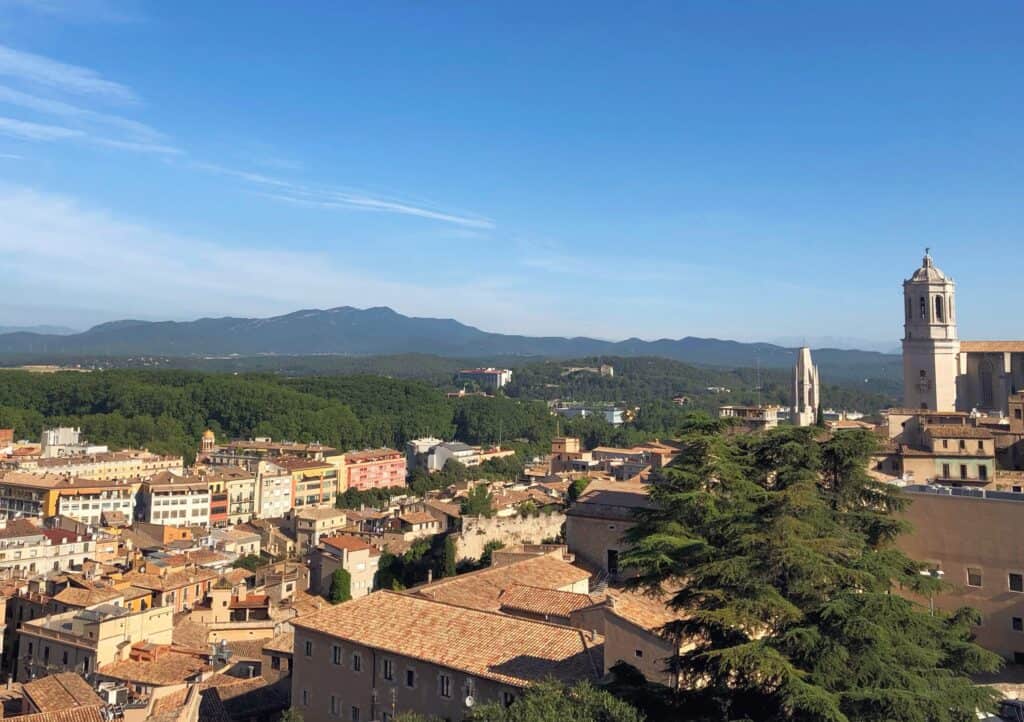
Asymmetrical towers add a twist to the facades of Girona’s two major churches, the Basilica of Saint Felix and the cathedral. The Sant Feliu’s outsized spire nearly squeezes out the rest of the building, which includes Roman and early Christian sarcophagi tacked onto a blend of later styles. Nearby, the cathedral’s cinematic entrance hides a beautifully-realized Catalan Gothic interior.


The Call Jueu, or Jewish Quarter, occupies a large swathe of the historic center. Several of the town’s landmark buildings take advantage of the sloping terrain, using dramatic staircases to accentuate their facades. The forking steps leading to Sant Martí are a prime example, ideally savored over a meal on the small terrace just below.
Assorted Art Nouveau and modern structures line the river, along with some wetland areas. The iconic red Pont de les Peixateries Velles is one of several footbridges connecting to the newer parts of the city. The train station is a 10-minute walk from the Plaça de Catalunya straddling the river; the tourist office there can provide a printed copy of its handy map. Express trains from Barcelona take 40 minutes; regular service runs closer to 90 minutes. Girona–Costa Brava Airport is 15 km from the city center with frequent flights on Ryanair and other European carriers.
Tarragona

Just an hour from Barcelona, Tarragona’s historic center is compact enough to explore in less than a day, although it’s atmospheric enough to enjoy for longer. As the capital of the Roman Empire’s largest province, the Part Alta (old town) holds several thousand years of construction. Along with its UNESCO sites, Tarragona also provides easy access to the beaches along Spain’s Costa Dorada (Gold Coast). We found the city refreshingly free of crowds in late June.


Tarraco, as the Romans called it, hosted a number of famous commanders such as Pompey and Julius Caesar, but it didn’t become a major city until the reign of Augustus. The first century amphitheater dates to the reign of Trajan or Hadrian, two of Rome’s greatest emperors who both happened to come from Hispania. The site hovers near the edge of the sparkling sea, which would have been even closer in Roman times. The second century provincial forum and circus made up the largest complex of its kind in the Empire. An upper-level terrace surrounded the temple dedicated to Augustus while porticos around the square led to meeting areas for the provincial government. The Romans also built two aqueducts, including a spectacular stretch across a gorge about 1.5 km outside of town.

Tarragona’s medieval cathedral benefitted from multiple layers of history right on the site. Visigoths destroyed a Roman temple in 382 and erected a basilica in its place. When Moors assumed control of the area in the eighth century, they turned the basilica into a mosque – which in turn was converted back into a church during the Christian Reconquista.


The Part Alta is an easy 10-15 minute walk from Tarragona’s train station. The route runs along the coastline, with especially scenic views from the Mediterranean Balcony, where wrought-iron railings complement the Art Nouveau buildings along the Rambla Nova. If the sea’s lure proves irresistible, Tarragona has no less than five beaches within city limits and countless others along the adjacent coast. A ramp near the train station bridges the tracks for the most immediate access to the beach. For more information, see our post Roman and Romanesque in Tarragona, Spain
Reus
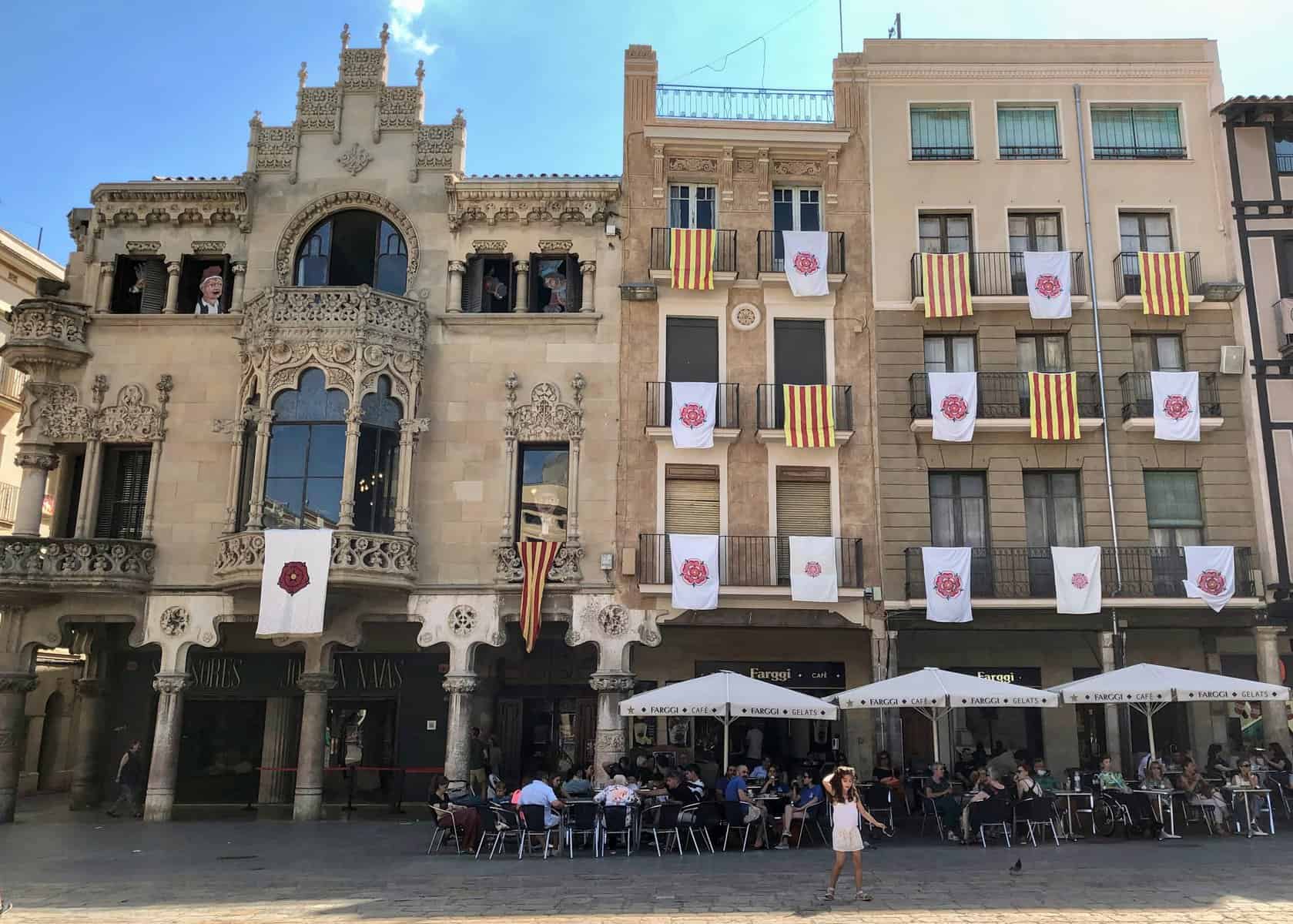
Located about an hour from Barcelona by train, Reus makes an ideal day trip either by itself or in combination with nearby Tarragona, Sitges or the beaches along the Costa Dorada. Bursting with civic pride, the town is a breeze to navigate, with excellent tourist services and atmospheric squares.
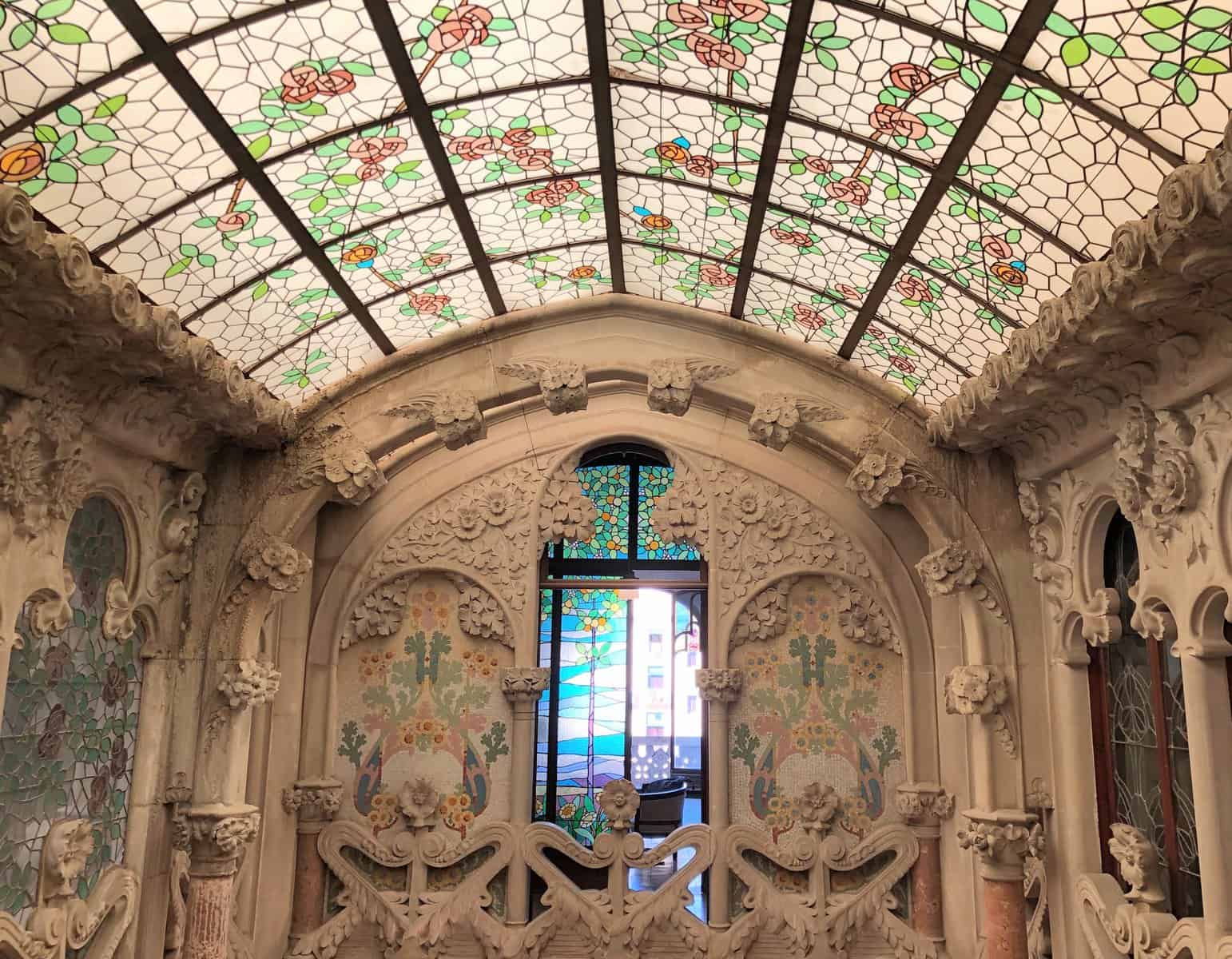
Reus was once Catalonia’s second-largest city and produced a number of the era’s great architects, including Gaudí as well as Joan Rubió and Pere Caselles. Although Gaudí never designed any buildings in his hometown, Reus contains the greatest concentration of Catalan Art Nouveau work outside of Barcelona. Lluís Domènech i Montaner, the movement’s other great architectural master, led the way with four projects in Reus between 1896 and 1911. The Casa Navàs is his only residential design open to the public and the sole Modernista building with a completely original interior. Reus also boasts dozens of buildings by lesser-known architects influenced by Domènech and Gaudì.


Reus’s train station is just a few minutes’ walk from the city center. The local tourism board offers an excellent map with 29 Modernisme buildings, seven Gaudí-related sites, and various other places of interest. Helpful tourist offices are located at the Carrer Sant Joan 34 A and in the Gaudí Centre on the Plaça del Mercadal. For more, see our post Casa Navàs and Catalan Art Nouveau in Reus, Spain.
Colònia Güell

Gaudi’s unfinished church at the Colònia Güell was a laboratory for the Sagrada Familia, getting closer to his radical process than any of his other buildings. Set within a workers colony commissioned by Eusebi Güell, it remains free from the superfluous special effects and exorbitant ticket prices of sites like Casa Battló and La Pedrera. To date, the Colònia Güell lies beyond Barcelona’s boundaries and doesn’t attract hordes of visitors.
Gaudí envisioned a huge church for the community, with an upper and a lower nave plus a pair of towers and a 40-meter dome. Güell’s death and insufficient funding brought the project to a halt in 1915, leaving only the bottom portion complete. Because the design was intended to blend into a hillside, the lower section is partially submerged; it’s often called the Crypt.

Unlike most architects, Gaudí developed his designs in three dimensions and often at full scale. He also collaborated with talented artisans who drew upon the region’s heritage of sophisticated brickwork. Just about every piece of stone or baked clay seems to be doing something different in this building; like his best work, it feels alive.


Gaudí’s friends and collaborators Francesc Berenger and Joan Rubió designed much of the surrounding community. Like many Modernista projects, the Colònia Güell is simultaneously progressive and conservative. It provided good living conditions for the factory workers, but reinforced their lesser status: grander homes like the Ca l’Espinal were reserved for administrators and upper-class residents. Textile production ceased in the 1970s, and the site today feels almost like a ghost town. (Real estate developers are currently courting investors.)
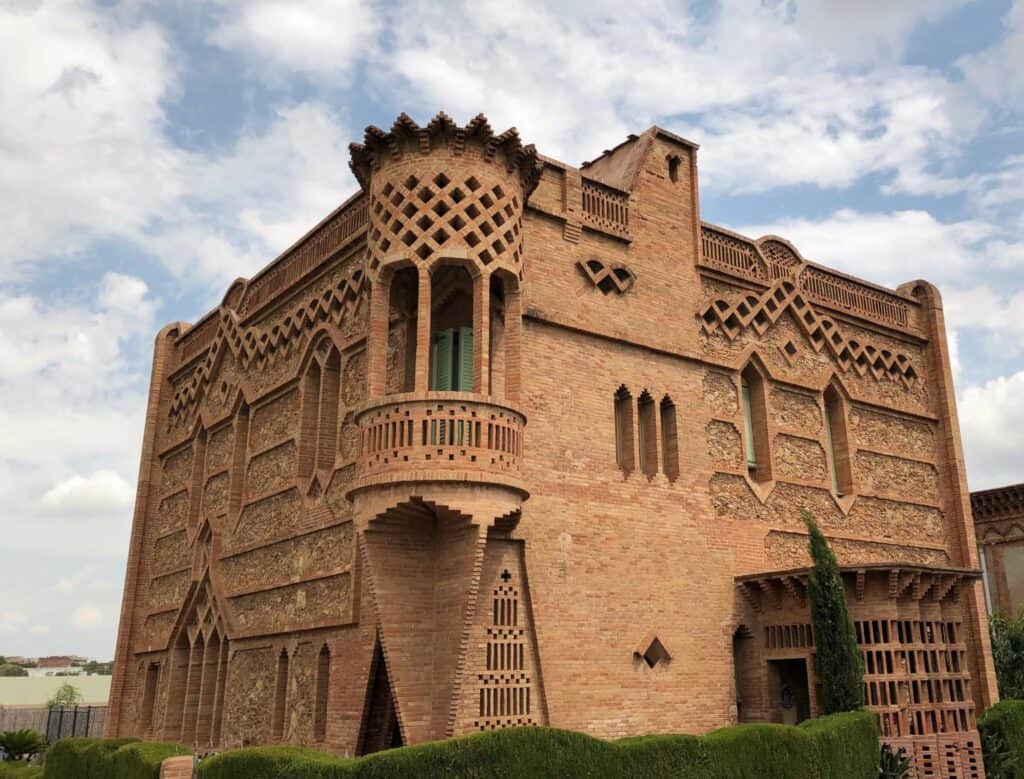
Trains take about 20 minutes from central Barcelona, followed by an easy 15-minute walk marked by blue footprints. For visiting information see the Colònia Güell website.
Garraf

Garraf is a favorite with locals, offering a beach and hiking trails without the crowds of Barceloneta or Sitges. The low-key town lies at the base of the Garraf Massif mountain range, just south of Barcelona.

A train ride of approximately 33 minutes deposits visitors at a tiny station just steps from the sea. Green-and-white cabins once used by fishermen and train operators line the sand beach, backed by the main road and a string of restaurants. Besides public showers and toilets, facilities include rentable umbrellas and loungers as well as paddle boats. The nearby port specializes in water sports, from diving to sailing.
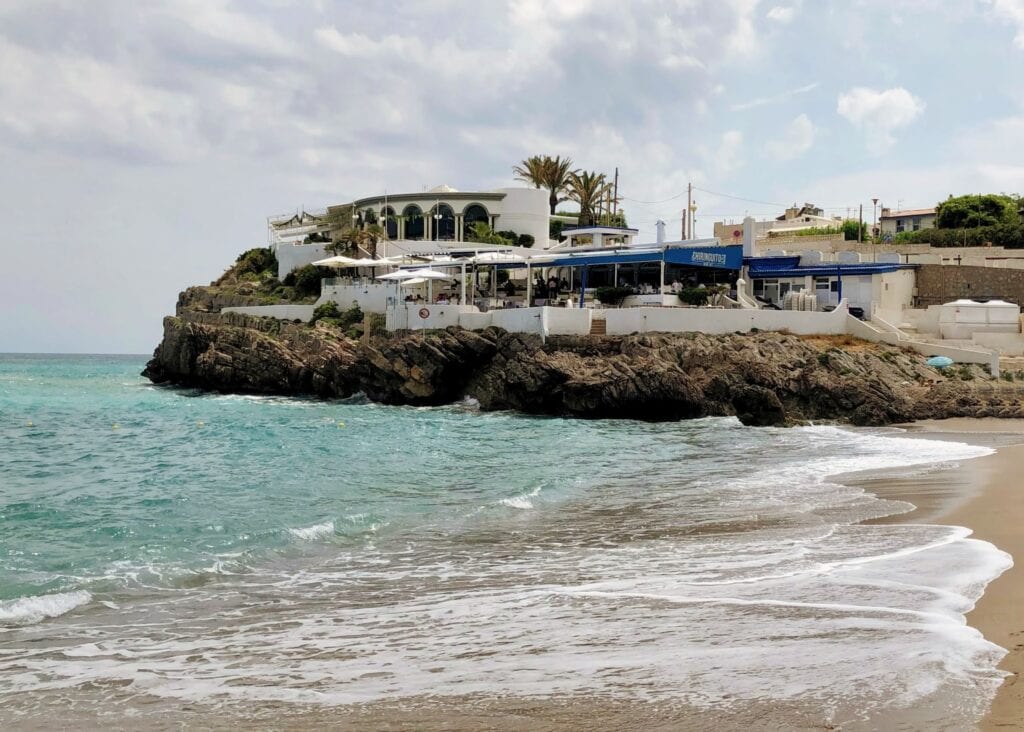
The town also features the Güell Bodegas (sometimes called the Celler Güell), one of Gaudí’s more obscure projects. Eusebi Güell commissioned a handful of major projects from the architect in 1882, so this site couldn’t receive his full attention. The completed portion includes a winery with three floors for parking, an apartment, and a domed chapel.
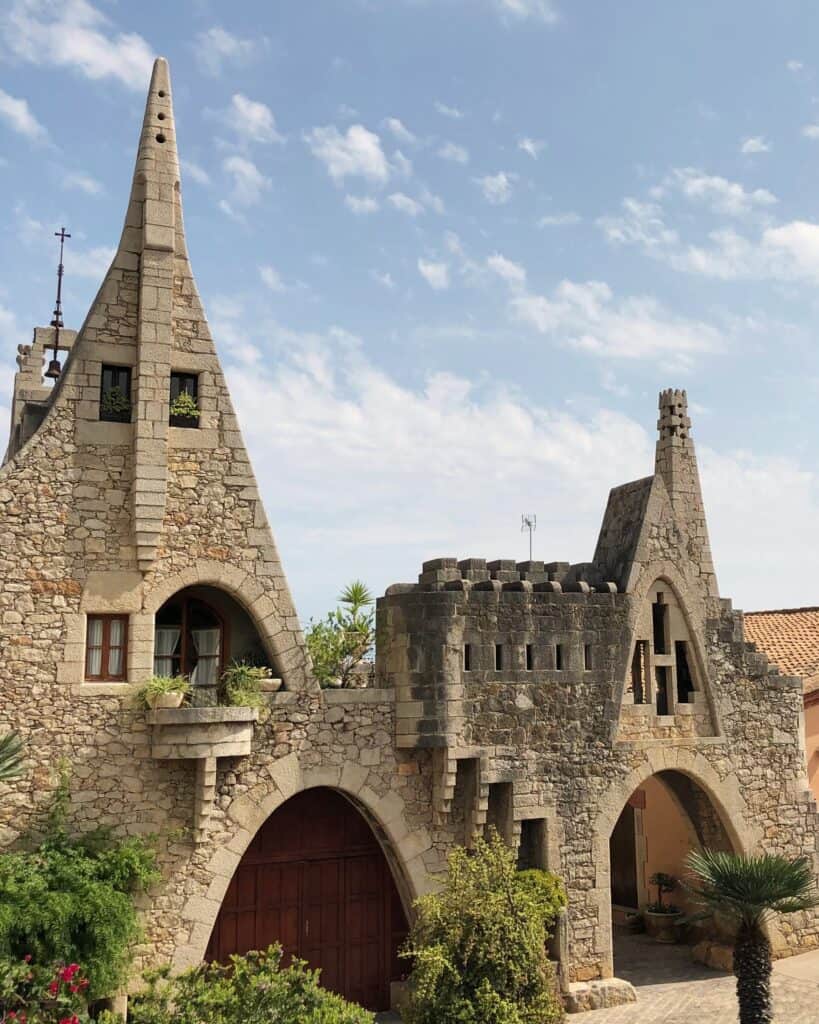
Most likely Francesc Berenguer oversaw construction, but the building’s most distinctive feature is pure Gaudí: a dramatically-sloping roof merging seamlessly with the rest of the structure. The complex was later turned into a restaurant. Despite reports online, the place has been closed for years and can only be viewed from the outside. We tried poking around but were shooed away by a group setting up a private event.
Hiking and cycling trails lead inland from the town into the Parc Natural del Garraf. Here sharp-edged limestone formations tower over ancient ruins and the occasional farmstead, with plenty of cliffs, caves, and chasms to explore. One of the most scenic routes runs all the way to Sitges, about 11 km down the coast. Another leads to what we’re fairly certain is the world’s only Tibetan Buddhist monastery housed in a historic Modernista estate. For information on guided tours as well as the site’s restaurant and meditation sessions, see the Sakya Tashi Ling website.
After a hike and a swim, we shared the train with wet-haired locals heading back to Barcelona. Frequent trains connect Garraf to Barcelona Sants and Passeig de Gracia stations.
Further Reading
For more on the area, see our posts on Tarragona and Reus. For more on Gaudí and Modernista architecture, see our posts:
Barcelona’s Ruta del Modernisme: a Self-Guided Walking Tour

